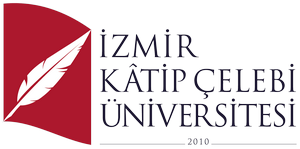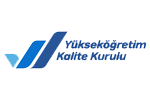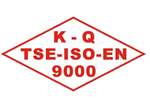09.02.2023
2022-2023 Bahar Dönemi Tasarım Seçmeli Dersi II Konuları
2022-2023 Bahar Döneminde Tasarım Seçmeli Dersi II kapsamında ilan edilen konular sunulmuştur. Öğrenciler, ilgili öğretim üyesi ile irtibata geçerek onay aldıktan sonra FRM 2: Design Project Application (https://me.ikcu.edu.tr/S/15337/tasarim-proje-dersleri) formunu kendileri ve ilgili öğretim elemanı tarafından imzalanmış bir şekilde Arş. Gör. Tuğrul Uslu’ya en geç 24 Şubat 2023 saat 16:00’ya kadar ileteceklerdir.
#
Konu
Danışman
Takım üyesi sayısı
Dosya adı
1
Investigation of the usage of agricultural wastes as filling material in biocomposites
Prof. Dr. Kutlay SEVER
2
Design_Project_Proposal_Form_1 .pdf
2
Investigation of the influence of surface treatment on adhesive bond strength of polymer composites
Prof. Dr. Kutlay SEVER
2
Design_Project_Proposal_Form_2 .pdf
3
Development of a Small-Scale Wind Turbine
Doç. Dr. Sercan ACARER
6
Design_Project_Proposal_Form_3 .pdf
4
Design and rapid prototyping (3D printer) test of high speed hydrostatic bearings for additively printed micro gas turbine applications
Doç. Dr. Sercan ACARER
1
Design_Project_Proposal_Form_4.pdf
5
Detailed Thermodynamic Modeling and Turbocharger Design of Automobile Engines (Gasoline and Diesel) and Investigate the Effects of Ambient Conditions, Turbocharger and Supercharger.
Doç. Dr. Sercan ACARER
1
Design_Project_Proposal_Form_5.pdf
6
System Design and CFD simulations of a vacuum-type supersonic wind tunnel for high-speed research purposes.
Doç. Dr. Sercan ACARER
1
Design_Project_Proposal_Form_6.pdf
7
Design of Heat Exchanger and Expansion Room for Joule-Thomson Cryogenic Cooler with Multiphase CFD Analyses with Evaporation and Condensation.
Doç. Dr. Sercan ACARER
1-2
Design_Project_Proposal_Form_7.pdf
8
Automatic Flight Control System for Landing on Moving Naval Platforms
Dr. Öğr. Üyesi Çağlar UYULAN
-
Design_Project_Proposal_Form_8 .pdf
9
Model-Based Verification and Validation of Distributed Controller
Architectures (Microcontroller Application: Automated Guided Vehicle)
Dr. Öğr. Üyesi Çağlar UYULAN
-
Design_Project_Proposal_Form_9.pdf
10
Identification, Learning, and Control in Robotic Systems
Dr. Öğr. Üyesi Çağlar UYULAN
-
Design_Project_Proposal_Form_10 .pdf
11
Developing Machine Learning-based Recognition Algorithm through
Data Acquisition from Eye Tracking Equipment
Dr. Öğr. Üyesi Çağlar UYULAN
-
Design_Project_Proposal_Form_11.pdf
12
Multi-purpose Tactical UAV Design and Manufacturing
Dr. Öğr. Üyesi Çağlar UYULAN
-
Design_Project_Proposal_Form_12 .pdf
13
Design and manufacturing of a machine climbing over a rope
Dr. Öğr. Üyesi Aydın ÜLKER
1-3
Design_Project_Proposal_Form_13.pdf
14
Design and manufacturing of fisherman's hook tying machine.
Dr. Öğr. Üyesi Aydın ÜLKER
1-3
Design_Project_Proposal_Form_14 .pdf
15
Determination of Mechanical Properties of Lattice Structures
Prof. Dr. Buket OKUTAN BABA
1-2
Design_Project_Proposal_Form_15 .pdf
16
Impact Analysis of Lattice Structures
Prof. Dr. Buket OKUTAN BABA
1-2
Design_Project_Proposal_Form_16 .pdf
17
Impact Analysis of Curved Composite Shells
Prof. Dr. Buket OKUTAN BABA
1-2
Design_Project_Proposal_Form_17 .pdf
18
Heat recovery aided mechanical ventilation of residential/nonresidential buildings.
Dr. Öğr. Üyesi Şahin GÜNGÖR
-
Design_Project_Proposal_Form_18 .pdf
19
Investigation of the usage of alternate lignocellulosic fibers as filling material in biocomposites
Ögr. Gör. Mustafa Öncül
2
Design_Project_Proposal_Form_19 .pdf
20
Investigation of interfacial flows on liquid infused surfaces
Dr. Ögr. Üyesi Umut Ceyhan
1-2
Design_Project_Proposal_Form_20 .pdf
21
Deformation of drops under shear flow
Dr. Ögr. Üyesi Umut Ceyhan
1-2
Design_Project_Proposal_Form_21 .pdf
22
Design and Fabrication of a Gearless Transmission Using Elbow Mechanism
Prof. Dr. Mehmet ÇEVİK
2
Design_Project_Proposal_Form_22 .pdf
23
Geneva Mechanism Based Automatic Paper Punching Machine
Prof. Dr. Mehmet ÇEVİK
2
Design_Project_Proposal_Form_23 .pdf
24
Design and Fabrication of a Kinematic Walker
Prof. Dr. Mehmet ÇEVİK
2
Design_Project_Proposal_Form_24 .pdf
25
Design and Fabrication of a Scaled Down Tower Crane
Prof. Dr. Mehmet ÇEVİK
2
Design_Project_Proposal_Form_25 .pdf
26
Optimum design and modeling of automotive structures using stochastic search algorithms
Doç.Dr.Levent AYDIN
1-3
Design_Project_Proposal_Form_26 .pdf
27
Optimum design and modeling of aerospace structures using stochastic search algorithms
Doç.Dr.Levent AYDIN
1-3
Design_Project_Proposal_Form_27 .pdf
28
Optimum design and modeling of naval structures using stochastic search algorithms
Doç.Dr.Levent AYDIN
1-3
Design_Project_Proposal_Form_28 .pdf
29
Optimum design and modeling of structures utilized in military applications by stochastic search algorithms
Doç.Dr.Levent AYDIN
1-3
Design_Project_Proposal_Form_29 .pdf















